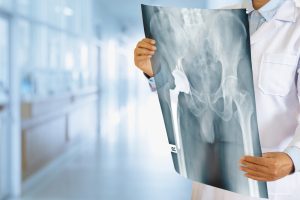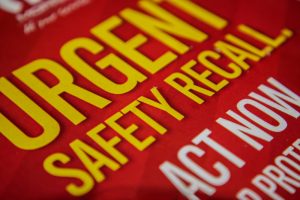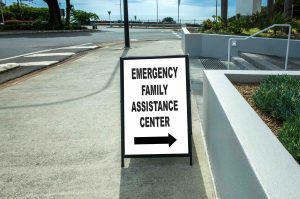August 2023
Inside This Issue
Hopefully everyone is enjoying their summer and has had, or anticipates having, a little vacation time to relax and refresh. Neither Joint Commission nor CMS have piled on any significant new requirements in this month’s transmittals. We had seen TJC’s acknowledgement during the past month of the directive from CMS we discussed last month in this newsletter relative to unannounced surveys and we thought we might hear some of the details about the alternative arrangements, but there is nothing mentioned in this month’s Perspectives.
Certification Program Most Frequently Scored: 
The August issue of Perspectives does provide some of the most frequently scored standards from 2022 in TJC’s certification programs. Accreditation program data had been reported in the April Perspectives. All of their unique stroke programs, all cardiac programs, and all orthopedic program data is compiled into those three categories. The data is reported by frequency rather than a percentage of surveys and they provide details on how many specific surveys are conducted for each program area.
We did notice one important observation and that is the most frequently scored element of performance for stroke, cardiac, and orthopedic certification was DSDF.03, EP 2 which requires that assessments are completed according to the patient’s needs and clinical practice guidelines. The use of clinical practice guidelines or best practices is a core design element for disease certification. As you think of internal performance measurement activities for your disease certification programs, you likely already analyzing this issue, but perhaps the depth or granularity of analysis could be deeper.
In the stroke and cardiac programs, DSDF.02, EP 5 is the second most frequently scored element. This EP requires that the program demonstrate evidence that it is following clinical practice guidelines when providing care, treatment or services, which again ties back to internal collection of performance measurement data for your program.
Total Hip and Knee Performance Measure: 
While we are discussing disease certification, Perspectives also has an announcement that effective January 1st, 2024, they are making their THKR-5 (total hip and knee) performance measure consistent with the data definition CMS has developed. The timeframe for evaluation is moving from 90 days to one year for assessment of functioning. If you have the orthopedic certification you will want to share this information with your program lead.
New Leaders at Joint Commission:
Perspectives announced four (4) new senior leaders at TJC:
- Jean Courtney, CPA, MBA, Executive Vice President and COO
- Paul Gerrard, Executive Vice President and Chief Brand and Communications Officer
- Ken Grubbs, DNP, MBA, RN, Executive Vice President Accreditation and Certification Operations and Chief Nursing Officer
- James Merlino, MD, Executive Vice President and Chief Innovation Officer
The Perspectives article includes a brief bio on each new individual. Readers will likely want to know who to reach out to if they encounter a survey problem. Based on the brief bio and description of duties we assume that will be Dr. Grubbs, but your account executives will undoubtedly help navigate that with you, depending on your issue or concern.
MRI Safety: 
This month’s Consistent Interpretation column discusses EC.02.01.01, EP 16, MRI safety. This EP was scored in only 21 of 1512 hospital surveys last year, or 1.39%. The issue is very important, and we find during consultative assessments that MRI staff can usually speak to their requirements quite well.
As is usually done, TJC provides some guidance to surveyors on what to score that organizations should be aware of. We note that TJC states in their guidance section that MRI zone signage is not actually required, although actions to prevent ferrous materials from entering the scan room is required. We also noted that TJC indicated a policy on MRI safety is needed per EP 14 of the same EC standard 02.01.01, although if you read the EP, it only speaks to actions to take to promote MRI safety and does not have a D for documentation. But if they are guiding surveyors to look for a policy you might want to verify you have one.
Not mentioned in the article is a gotcha we have seen on some survey reports for a failure to clinically screen the surveyor for entry into the control room (zone III). Often times the MRI staff is surprised by the arrival of their departmental, hospital wide leaders, and surveyors as they stroll into the control room to discuss MRI safety. We advise organizations to slow this process down a bit and have a technician greet the survey entourage in the hallway and screen anyone not previously screened prior to permitting entry.
Medical Devices and Recalls: 
The lead article in EC News is entitled Device Distress Signals, but it really is about medical device notices, alerts, and recalls and how to manage them. Medical devices, much like pharmaceuticals, are overseen by the FDA. If you want to understand the nuances of the recall process, use this link to the FDA website for details on how they or the manufacturer implements a recall, alert, or other notice. https://www.fda.gov/medical-devices/postmarket-requirements-devices/recalls-corrections-and-removals-devices
Again, just like pharmaceuticals, knowing about the recall, notice, or alert and taking action is critical. Recalls, alerts, or notices may come from device manufacturer or the FDA, and the FDA website tracks all of these to make the task of initiating action feasible. Use this link to the FDA website to see the list of medical equipment advisories. https://www.fda.gov/medical-devices/medical-device-safety
The Joint Commission standard that governs this issue is EC.02.01.01, EP 11 and the wording might not make it clear that this EP addresses medical devices. The EP language requires the hospital to respond to recalls and notices, and this is where a failure to implement a device recall could be scored.
The EC News article recommends developing a written process for implementing medical device recalls and describing that process in your safety management plan. This seems like a good idea and the authors further recommend identifying the responsible individual, the process for promptly notifying departments about the recall, defining the necessary actions to undertake for the notification, establish a timeframe for action, and lastly, document what was done.
We would also suggest that you build in some redundancy for obtaining the notices and for tracking actions. Notices may come by US Mail or electronically and can get routed to the wrong department or individual, or employees who no longer work at the organization. Establishing a schedule to go out to the FDA website to seek notices or recalls helps to compensate for the potential misrouting other forms of correspondence.
The authors of the EC News article provide detailed suggestions for implementing recall notices, one of which is using your own medical equipment inventory as a start point to determine if you have ever purchased the specific device, product, or lot number. This speaks to the importance of having an accurate medical device inventory and we know over the years we have seen many TJC findings for medical equipment such as endoscopes that have been purchased by a department and not made their way onto the medical equipment inventory. This article is worth sharing with your responsible individuals and then reviewing internal processes for action and tracking to determine if enhancements can be made.
You might wonder how surveyors or consultants become aware of these recalls in order to evaluate if an organization has taken action. Many email newsletters such as Becker’s or those from professional societies occasionally mention an important device recall. With all the travel, hotel downtime, and group networking surveyors have, it’s easy to make note of an important recall and to then evaluate if an organization has taken action. Too often the finding is that the organization was not aware, and/or had not taken action or while aware, had not documented any action taken.
Active Shooter Exercises: 
EC News also contains a summary of a presentation on active shooter exercises that was provided at a recent JCR Emergency Management Conference. While this is a subject we all would like to not think about, it is unfortunately a potential situation we need to be ready for and one that you likely already have on your hazard vulnerability assessment (HVA).
The authors provide many good suggestions for planning and carrying out potential exercises. One such suggestion is to not use a prop gun that fires blanks for your exercise. The author used a gunshot box to simulate the noise that looked nothing like a gun. We all have likely heard about the unfortunate deadly mistake on a movie set back in 2021. A prop gun could also be hazardous if someone not familiar with the exercise sees/hears shooting and tries to “take action.”
The authors also suggest not pre-designating a safe room as the active shooter could be a co-worker or former employee making it easier to target employees. The authors also suggested using the FBI’s active attacker protocol or RUN-HIDE-FIGHT and to ensure that all departments have the opportunity to plan and participate in exercises on this issue.
Lastly, the authors suggest preparing for a real event rather than preparing for a Joint Commission survey. This sounds like good advice for any of the preparatory work done for standards compliance. There is a real value to being ready and knowing what to do. If an active shooter exercise is on your planning horizon, having your team review this article would be helpful.
Family Assistance Centers: 
EC News has another good article from Northwestern Lake Forest Medical Center that follows the prior story about active shooter nicely, on the concept of a Family Assistance Center (FAC). They describe a community active shooter event where multiple individuals were transported to local emergency rooms, including their own. Family members came to the hospital seeking loved ones and they were able to set up their FAC that they had been working on. This center could help family members track or locate the injured and offer comforts such as food or drink and even some spiritual or crisis counseling.
Readers might think this sounds like a nice thing to do, but question, do I have to? The answer is yes, derived from the new EM chapter. Specifically, EM.12.02.05, EP 2 which requires the organization to plan for providing patient care and clinical support for individuals who may present during an emergency and are not in need of medical care.
EM.14.01.01, EP 2 also addresses this issue when it says the disaster recovery plan should discuss how the hospital will address family reunification and coordinate with local community partners to help locate and assist with identification of adults and unaccompanied children. Again, as you plan your coming years exercises, this might be a feature you want to incorporate.
Preventing Infant Abductions: 
EC News has a good review article on infant abductions, a subject we have not discussed in quite a few years. There is some excellent data from the National Center for Missing and Exploited Children (NCMEC) that was updated through 2022. This can be found at: https://www.missingkids.org/content/dam/missingkids/pdfs/ncmec-analysis/Infant%20Abduction%20Trends_10_10_22.pdf
While healthcare facilities used to be the predominate location where abductions had occurred, the data indicates that in more recent years other settings and in the home predominate. The author of the EC News article discusses a personal experience where an infant abduction occurred from a hospital nursery that had been experiencing multiple false alarms from their security system. This case it was real, but staff ignored the alarm because they assumed it was another false alarm.
That desensitization from multiple false alerts is an unfortunate frequent occurrence in our industry be it from infant alarms, automated clinical warnings, or bar code scan failures. The author provides suggestions for electronic banding, employee identification, and education of parents about staff ID, and sign in procedures on the units. If your organization has not revisited this issue in several years, it may be time to refresh policies using this article and the recent data from NCMEC to help guide modifications.
Vaccine Mandate:
During the past month CMS issued two QSO memos of interest to our readers. The first memo, QSO 23-02, is an update of an earlier July 25th, 2023, memo that eliminated the Covid vaccine requirements. CMS published a final rule on August 5th eliminating the vaccine mandate and in addition CMS will not be scoring the issue effective June 5th, 2023 – August 4th, 2023. Hospitals can of course determine their own requirements but neither CMS nor Joint Commission surveyors will be enforcing the earlier mandate.
Suicide Safety and Workplace Violence: 
The second QSO memo this month is QSO 23-19, published July 17th, 2023. This memo discusses suicide safety and hospital expectations for assessing and managing patients and the physical environment. The issue that is somewhat confusing is – why was this memo was issued, what if anything is new in this memo, and how it interfaces with earlier guidance on this same issue in QSO 18-06, QSO 18-21, and in particular QSO 19-12 which was very detailed draft interpretive guidance that was never finalized.
The most recent memo seems like a high-level summary of expectations, generally consistent with the more detailed QSO 19-12, but it remains unclear if anything in 19-12 is eliminated. The key take aways we derived from the most recent QSO-23-19 include:
- Hospitals are not required to have the same degree of ligature safety throughout the hospital, but rather to focus on the specific needs and risks of individual patients.
- Corrective actions taken in response to adverse events should focus on addressing the failures rather than universal remedies. For example, an attempted suicide using a door should focus on the environment, but also on the assessment and monitoring that should have been taking place.
- Patients in psychiatric hospitals and units should be screened for suicidal ideation. In acute hospital patients being treated for behavioral health conditions as their primary reason for admission should also be screened for suicidal ideation. Hospital policy should address other circumstances where suicidal screening is required.
- Hospitals should provide the appropriate level of education and training for staff regarding identification of patients at risk, the identification of environmental risks and mitigation strategies. This includes direct employees, volunteers, contractors, per diem staff, and any other individuals providing clinical care under arrangement. Education and training should occur at orientation, whenever policies change, and at least every two years.
- All hospitals should implement an environmental risk assessment strategy to provide care in a safe setting.
As you read the above bullet points you are likely thinking, yes that’s what I have understood is required by CMS and TJC. But you also may be wondering what’s new and what’s changed, as we are. The only thing that drew our attention is the Discussion section on page 2 of 4 that talks about harm to self or others and the need to minimize these risks. It has appeared to us that the TJC/CMS focus has been on suicide safety exclusively, although we know progressive mental health facilities are incorporating more use of patient specific violence assessments.
If you search your TJC hospital manual there are many references to the word “violence” as a result of the workplace violence standards issued several years ago. The CMS interpretive guidance at present has two references relative to nursing managing patient violence. Neither manual as yet discusses patient specific violence assessments, although we do see some organizations building this into their assessment processes.
Consultant Corner
Dear Readers,

According to the CDC, someone in the United States has a stroke every 40 seconds, which turns out to be about 795,000 every year! The likelihood of a stroke patient coming through your hospital doors is probable – is your organization best prepared to provide quality and safe patient care?
Our Disease Specific Care (DSC) Stroke Certification Assistance program can help whether you are
1) looking to obtain initial certification,
2) looking to maintain certification,
3) looking to build/expand your program, or 4) seeking recovery assistance.
Ensuring your community is provided with the highest and most reliable safe and quality patient care and assisting in your success is our top goal. Meet your stroke specialist and contact us today to schedule your expert consultation!
Don’t wait, call us at 888-PHC-INC1 or Contact Us today!
Thank You,
Jennifer Cowel, RN MHSA
JenCowel@PattonHC.com
Julia Finken, RN, BSN, MBA, CPHQ
julia.finken@hbsinc.com
Kurt Patton, MS RPh
Kurt@PattonHC.com
John Rosing, MHA
JohnRosing@PattonHC.com
